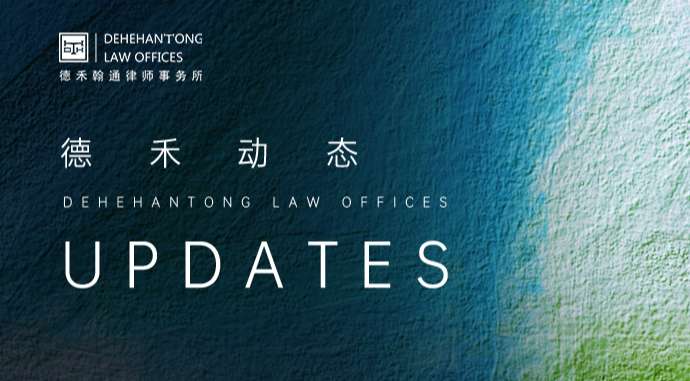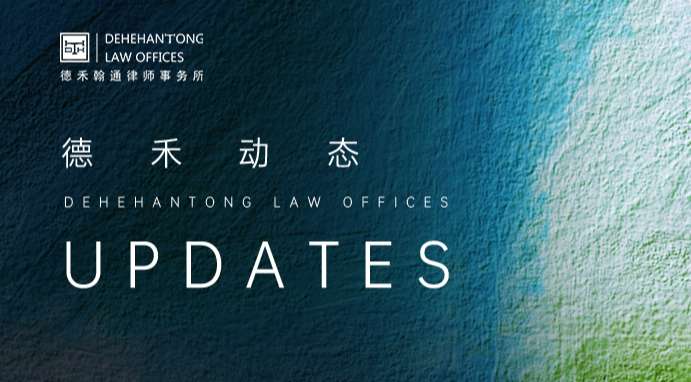The impact of property preservation and enforcement measures on the priority of ordinary creditor repayment in the case of multiple creditors
I. Presentation of the Problem
The principle of equality of claims in civil substantive law refers to the fact that multiple ordinary claims held by multiple creditors against the same debtor, regardless of their occurrence time, amount or creditor status, are all equal in terms of repayment status. This principle is simple, clear and definite.
However, through the civil procedure law, the actual order and proportion of repayment for ordinary claims have become more stringent. Especially when the debtor's available assets for execution are insufficient to settle all debts, whether the debtor is an enterprise legal person, whether the creditor has effectively carried out property preservation in the trial process and obtained the "first seal" status, and the sequence of taking enforcement measures in the enforcement process, etc., will directly determine to what extent the creditor can ultimately realize their creditor's rights. Therefore, clarifying this issue is of great value for lawyers' overall case representation strategies and the protection of creditors' rights and interests.
This article will combine the relevant legal provisions of the "Interpretation of the Supreme People's Court on the Application of the Civil Procedure Law of the People's Republic of China" (hereinafter referred to as the "Interpretation of the Civil Procedure Law") revised in 2022 and the "Provisions of the Supreme People's Court on Several Issues Concerning the Enforcement Work of the People's Courts (Trial Implementation)" (hereinafter referred to as the "Enforcement Work Provisions") revised in 2020 Conduct a systematic review of this issue.
Ii. Specific Application of the Principle of Prioralism and the Principle of Egalitarianism
It should be noted that whether it is the principle of primacy or the principle of egalitarianism, they are both concrete manifestations of the principle of equality of claims in civil substantive law in civil procedural law. The principle of primacy in procedural law does not contravene the principle of equality of claims in substantive law.
(1) Each creditor's right is based on an effective legal document
The principle of egalitarianism is definitely applicable
According to Article 55, Paragraph 3 of the "Regulations on Enforcement Work", if multiple creditors who have determined the content of monetary payment in an effective legal document apply for enforcement against the same person subject to enforcement, and the property subject to enforcement is insufficient to settle all debts, and none of the creditors has a security interest in the subject matter of enforcement, they shall be compensated in proportion to their respective claims.
Therefore, if multiple creditors determine the content of monetary payment based on an effective legal document, the principle of egalitarianism shall apply when the debtor is insolvent. Of course, when the debtor is not yet insolvent, all creditors are also fully compensated in accordance with the principle of egalitarianism.
(2) Each creditor's right is based on different effective legal documents
What has been determined should be further discussed
The principle of priority shall apply where the debtor is not yet insolvent
According to Article 55, Paragraph 1 of the "Regulations on Enforcement Work", where multiple creditors whose monetary payment contents are determined by multiple effective legal documents respectively apply for enforcement against the same person subject to enforcement, and none of the creditors have a security interest in the subject matter of enforcement, they shall be compensated in the order in which the enforcement court takes enforcement measures.
It should be noted that the general rule of "the first to claim, the first to be compensated" in the enforcement procedure, which is used to encourage creditors to promptly safeguard and remedy their own legitimate rights and interests, only applies when the available assets of the person subject to enforcement are sufficient to settle all debts. That is, regardless of whether the person subject to enforcement is an enterprise legal person, a citizen or any other organization, as long as the available assets for enforcement are sufficient to settle all debts, ordinary claims shall be repaid in the order in which the enforcement court takes enforcement measures. However, in cases where the available assets of the person subject to enforcement are insufficient to settle all debts, the participation in distribution system and the system of converting enforcement into bankruptcy, as special rules, should be applied.
2. If the debtor is already insolvent, further discussion should be held
(1) Where the person subject to enforcement is a citizen or other organization, the principle of egalitarianism shall apply
According to Article 506, Paragraph 1 of the Interpretation of the Civil Procedure Law, if the person subject to enforcement is a citizen or other organization and, after the enforcement procedure commences, other creditors of the person subject to enforcement who have obtained enforcement evidence find that the property of the person subject to enforcement is insufficient to settle all claims, they may apply to the people's court for participation in the distribution. According to Article 508 of the Interpretation of the Civil Procedure Law, in the process of participating in the distribution and enforcement, after deducting the enforcement expenses from the proceeds of enforcement and repaying the claims that should be given priority in compensation, for ordinary claims, in principle, they shall be compensated in proportion to the total amount of claims applied for participation in the distribution. The remaining debt after repayment shall continue to be repaid by the person subject to enforcement. If a creditor discovers that the person subject to enforcement has other properties, he or she may request the people's court to enforce them at any time.
The participation distribution system has a function similar to the bankruptcy system and is applicable to situations where the debtor is a citizen or other organization (rather than an enterprise legal person) and is insolvent, in order to achieve fair repayment of all claims. For the determination of a debtor being insolvent, based on the viewpoints of the Supreme People's Court in precedents such as (2021) Supreme People's Court Enforcement Supervision No. 470 and (2022) Supreme People's Court Enforcement Supervision No. 109, it is not necessary to demand that the applicants participating in the distribution must understand or provide sufficient evidence to prove that the property of the person subject to enforcement is no longer sufficient to settle all the debts. The enforcement court shall, in light of the overall circumstances of the relevant enforcement case, review the application for participation in the distribution and decide whether to grant it. As long as it is determined that the current property of the person subject to enforcement is no longer sufficient to settle all claims, other creditors should be allowed to apply for participation in the distribution.
In addition, if a creditor makes a significant contribution to the seizure, detention or freezing of the distributed property, such as through the first round of seizure, providing property leads, exercising the right of revocation lawsuit or the lawsuit of objection to execution, or offering a reward for execution, many courts in practice will appropriately increase the creditor's distribution ratio as a reward. It generally does not exceed 20% of the amount it should receive when distributed in proportion to its creditor's rights. This distribution method conforms to the expression of "in principle" in the legal provisions, can realize the institutional value of property preservation, and alleviate the predicament of difficulty in locating the debtor's property during the enforcement process. To a certain extent, it is also conducive to the realization of the claims of other creditors.
(2) Where the person subject to enforcement is an enterprise legal person and the case has been converted from enforcement to bankruptcy, the principle of egalitarianism shall apply
According to Article 511 of the Interpretation of the Civil Procedure Law, during the enforcement process, if the enterprise legal person as the person subject to enforcement meets the circumstances stipulated in the first paragraph of Article 2 of the Enterprise Bankruptcy Law, the enforcement court, with the consent of one of the applicants for enforcement or the person subject to enforcement, shall rule to suspend the enforcement against such person and transfer the relevant materials of the enforcement case to the people's court at the place where the person subject to enforcement resides. According to Article 113, Paragraph 2 of the Enterprise Bankruptcy Law, if the bankruptcy estate is insufficient to meet the claims of the same order of repayment, it shall be distributed proportionally.
When an insolvent enterprise legal person enters the bankruptcy (reorganization) process in a timely manner in accordance with the law, it is conducive to fully realizing the interests of all parties involved and ensuring fair compensation for creditors. However, in practice, neither creditors nor debtors have the willingness and motivation to initiate bankruptcy proceedings. For creditors, initiating bankruptcy proceedings will allow other creditors to "hitch a ride" and reduce their own compensation rate. For debtors, initiating bankruptcy proceedings will confront practical issues such as shareholders' paid-in capital contributions and the need to repay all debts, or they may believe there is still hope for turning losses into profits.
(3) Where the person subject to enforcement is an enterprise legal person and does not undergo "enforcement to bankruptcy", the principle of priority shall apply
According to Article 514 of the Interpretation of the Civil Procedure Law, if the parties do not agree to transfer the case to bankruptcy or the people's court at the place where the person subject to enforcement resides does not accept the bankruptcy case, the enforcement court shall, after deducting the enforcement expenses and repaying the priority claims, repay the ordinary claims in the order of property preservation and the order of property seizure, detention or freezing during enforcement.
When an insolvent enterprise legal person fails to enter the bankruptcy process, its property shall be distributed in accordance with the sequence of seizure, detention and freezing as stipulated in the property preservation and enforcement measures, thereby "forcing" creditors who are unable to be compensated due to a lower ranking to apply for the bankruptcy of the enterprise legal person.
It should be noted that the principle of priority here is different from the principle of priority in the previous text when the available assets of the person subject to enforcement are sufficient to settle all debts, that is, "the one who claims first will be paid first". The criterion for judgment here is the sequence of "enforcement measures", while the criterion for judgment here is the sequence of "property preservation and enforcement measures".
In addition, according to the above regulations, the creditor whose property preservation and enforcement measures are subject to seizure, detention or freezing first does not mean that all their claims can be given priority for repayment. According to the viewpoint of the Supreme People's Court in the case of (2022) Supreme People's Court Enforcement Reply No. 2, for ordinary claims of multiple creditors, they should be settled in the order of the seizure, detention and freezing of properties. When allocating the case funds specifically, the order of property preservation and the amount of preservation should be considered together, and the two cannot be separated. The order of preservation determines the sequence of creditor's rights repayment, while the amount of preservation determines the extent to which creditors with a higher order are compensated.
Iii. Practical Suggestions for the Creditor Side
(1) When a creditor's right is established,
Establish security interests in a timely manner
The fundamental significance of the existence of security interests lies in the priority right of compensation. Whether in civil substantive law or civil procedural law, security interests have a priority over ordinary claims in terms of the order of repayment.
(2) Proceed with the lawsuit as soon as possible
Application for enforcement process
Especially when the debtor is a civil subject that frequently participates in commercial activities, the available assets for execution are relatively constant, but the number of other creditors competing with the creditor is difficult to predict. Therefore, after their rights are infringed upon, creditors should promptly file a lawsuit to confirm their claims and actively realize them through enforcement. Where the debtor's available assets for execution are sufficient to settle all existing debts, "the first claimant shall have priority in repayment." Otherwise, if there is any delay and other creditors emerge, the debtor will face insolvency, and the creditors will be dragged into an awkward situation of participating in the distribution or being converted into bankruptcy distribution, with their repayment rate significantly reduced.
(3) Strengthen the awareness of property preservation in the trial process
Seize the "first seal
According to Article 56 of the "Regulations on Enforcement Work", the specific distribution of the property of the person subject to enforcement shall be presided over by the court that first seals up, seizes or freezes it. If the enforcement measures taken by the court that has first sealed up, seized or frozen the property are for the enforcement of a property preservation order, the specific distribution shall be carried out after the conclusion of the case hearing of that court.
That is to say, only the court that made the first round of seizure has the right to dispose of the distributed property. Even if there are priority claims such as security interests, the property still needs to be distributed through the court that made the first seizure. Therefore, when the debtor's available assets for execution are sufficient to settle all debts, effective property preservation during the trial process not only offers the opportunity to facilitate mediation but also directly reduces various troubles in the enforcement procedure. When the debtor's available assets are insufficient to settle all debts, if the debtor is a citizen or other organization, seizing the "first seal" will have the opportunity to receive an additional 20%. If the debtor is a corporate legal person and has not entered the bankruptcy process, seizing the "first seal" can be the first to be repaid among numerous ordinary claims.















